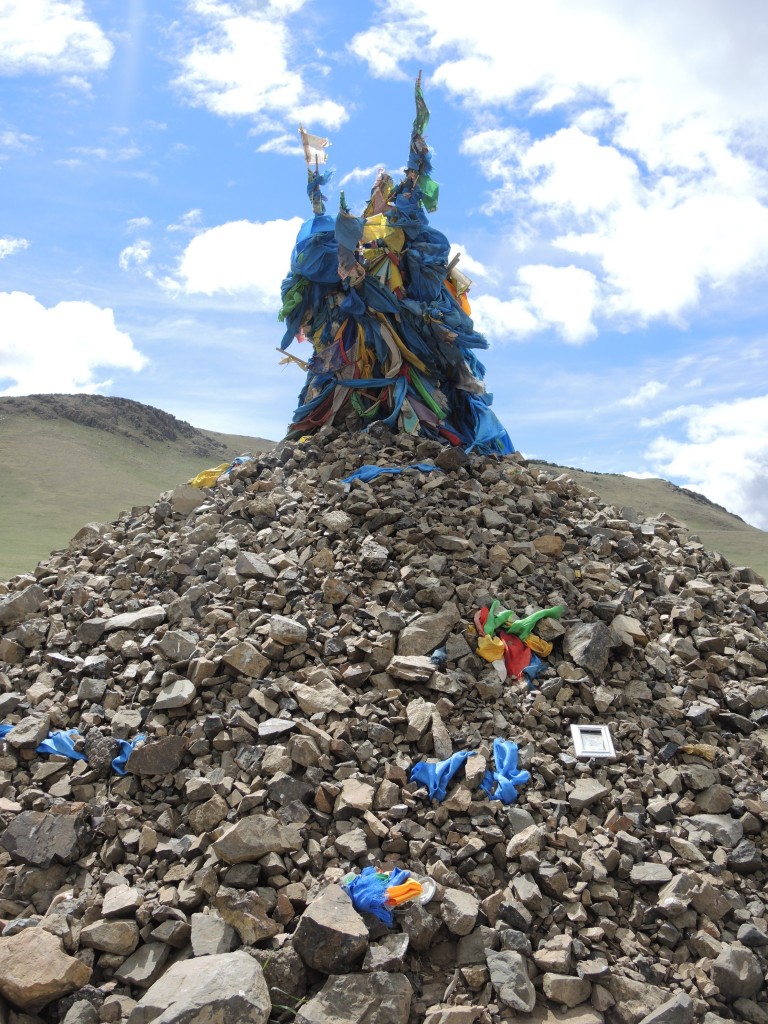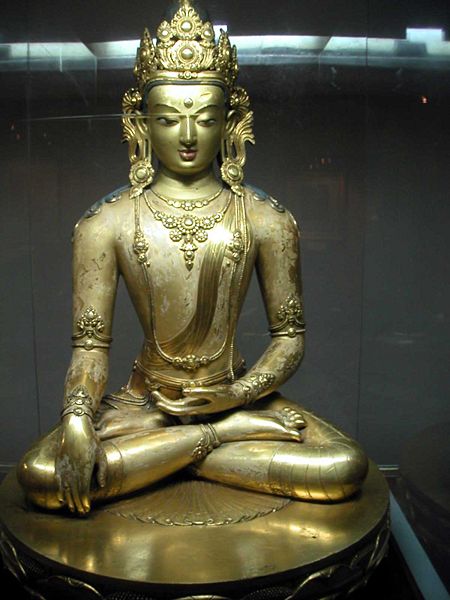9 June.
To recap the end of the previous post, I woke up early this morning ã about 06:30 – and by about 07:00 I went up to the main house hoping for some tea to take the chill off. John and Anne were there as well. They had coffee and decided to take one last walk around the park. I opted to stay behind, continue writing and to read a bit. The park is beautiful and I knew the next day and a half would be quite sedentary but I was happy with the respite. The others in the group were inclined to share the Kiwiãs experience and trooped in one at a time for breakfast at 09:00.
After breakfast, we piled on our minibus and began the trip back to UB. On the ride into the park, Odka pointed out a rock formation called Turtle Rock. At my request we made a quick detour so I could get a picture or two because, as an alumnus I’m a Retriever, in many other ways, Iãm a Terp.
Others in the group wanted to get some close-up pictures of yaks so we made a stop for them as well. Interestingly, Groud told us that the yaks we see in this part of Mongolia arenãt true pure-bred yaks. These are cross bred with cows. In Mongolia, pure yaks live in the west in the Altai Mountains and have adapted for life at altitude and in the tundra. Yaks can also be found in the Himalayas. Also, although in English we have adapted the term yak to refer to both genders, to Mongolians this is akin to referring to all our domestic bovines as bulls. The proper term for a female is nak or dri.
Before making our final exit from the park, we stopped at an Ovoo shrine. This is a shamanistic stone cairn topped with prayer flags.  Odka told us that itãs traditional for travelers to pick up stones and make three clockwise circuits of the Ovoo to ensure good fortune on our journey. G told me that in the days of the empire, before setting off to war, soldiers would create such a shrine using one stone each. After the battle, the living soldiers collected their stones and the remaining rocks indicated the number of men lost.
Odka told us that itãs traditional for travelers to pick up stones and make three clockwise circuits of the Ovoo to ensure good fortune on our journey. G told me that in the days of the empire, before setting off to war, soldiers would create such a shrine using one stone each. After the battle, the living soldiers collected their stones and the remaining rocks indicated the number of men lost.
The road back to UB was more direct and in better repair than the route we’d taken to the park. (Of course, this meant no Chinggis Khan and no Eagles.) It turns out this was a toll road and I guess the tolls are used to maintain it. It was still bumpy, however, and that, in combination with all the tea I drank before and with breakfast, began to stress my hamster sized bladder. Fortunately, we stopped for gas and there was a long drop (akin to an outhouse in the States) behind the station. I gladly made use of it – reinforcing the answer to the riddle my mother used to pose:
Q: If a carrot is a carrot and a potato is a potato, what is a pea?
A: A RELIEF. ?ã?
Back in UB, we had use of a day room at the Michele so I charged my camera and phone batteries and showered before heading out to visit the Fine Arts Museum which proved interesting in ways both expected and unexpected.
Iãll start with the unexpected. In order to display the earliest Mongolian art ã most of which was cave paintings ã present day artists have rendered replications in oil on surfaces made to appear cave like. There are, however, some actual Paleolithic works on display. Most of them are large deer stones. (Iãll pause to note that the MFA is like most other attractions in UB in its requirement to pay an additional fee for permission to take photos. The fee here was 20,000 tugrik or about $15 and more than the cost of admission so I again voted in favor of no photographs. Also, like many of the other places enforcement seems to be on the honor system and I abided by it, not even taking a picture of the sign that mixed the Latin and Cyrillic alphabets in ãappliqéã and ãpapier-mBachéã for appliquûˋ and papier-mûÂchûˋ.)
A few items on display changed my mind about the cultural show we saw on Friday night. A stunning late nineteenth century fiddle with an elaborately carved horseãs head looked very much like itãs plainer brother used in the show. Giving the benefit of the doubt to the cultural show, I will assume the two instruments are tonally similar. I also saw other elements Iãd seen on Friday on display including some costuming and the masks, and a video of a Tsam Ceremony.
I was also deeply impressed with the seventeenth century sculptures of Zanabazar. Zanabazar was a direct descendent of Chinggis Khan and was recognized as a reincarnate lama in 1640 when he was named by the Dalai Lama as Gegen or the high lama of the Gelug and third ranking lama in Mongolia. He has sometimes been called the Michelangelo of Asia for his work in matters related to spirituality (including theology), language, art, medicine, and astronomy. Among his many other achievements he is known to have composed sacred music and mastered the arts of bronze casting and painting. He created a new design for monastic robes and he invented the Soyombo script used as the alphabet for Mongolian Buddhism. The photo below is taken from Wikitravelãs Ulaanbaatar guide page.
I spent the rest of the afternoon walking around UB and people watching at one point passing Ana who was walking in the opposite direction doing the same. (There are no new photo albums in this post. You’ll have to be content with the old stuff until tomorrow.)
The group congregated in the hotel lobby at 19:30 to collect our bags and give us time to stop and change our currency from tugriks to rubles. G had said that UB had a few twenty-four hour banks but Odka told us sheãd made an appointment for us at a money exchange. It seemed a bit odd but we went with the flow.
The place she took us was a small open booth staffed by two men. It had no obvious security ã not even a lock on the door. It sat on a stairway landing above what appeared to be a more legitimate currency exchange office and just beyond a physically similar place but that one sold ice cream and looked to be closing up shop for the night. Both Odka and one of the chaps in the booth had calculators but frankly, most of us (particularly the oldsters) were uncertain whether the purpose of Odkaãs presence was to verify the exchange rate or instruct.
In the middle of one of our exchanges a man walked up to the side of the booth and the money changer within simply handed him a wad of bills. Given the relative value of the tugrik one might expect someone to carry a wad of bills and it might have been a perfectly legitimate transaction, but it did, ô to put it kindly, add a layer of shadiness to the exchange process. Most of us are fairly certain that Odka had a piece of the action.


Can’t blame a girl for trying to make a few extra shekels from “rich” Westerners, eh? I doubt that anyone got terribly ripped off and the extra money probably meant a lot to her. Have found your Mongolian leg to be very interesting and not at all what I might have expected. Really like the Ovoo shrine.
Thanks to my most loyal commenter. Mongolia was a great experience.
Of course, a small tutorial on Genghis Khan would be nice for us too lazy to WIki it Þ I think I heard on NPR that he had a statistically significant number of decendants (how they knew has escaped me.)
Quite the adventure, dude!